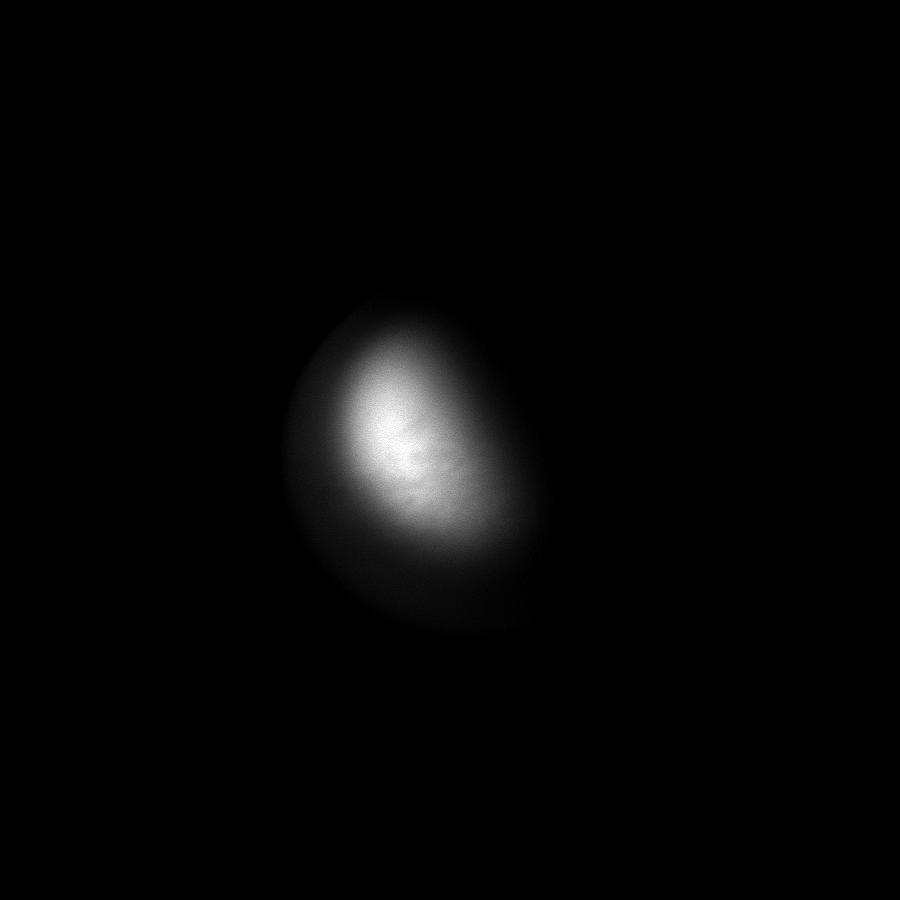Eclipsing Titan

| PIA Number | PIA11610 |
|---|---|
| Language |
|
Titan becomes obscured as it moves into eclipse by Saturn.
Using a camera filter sensitive to near-infrared light, this image manages to show albedo features on the moon. For a view of Titan in eclipse taken in visible light, see Titan in Eclipse.
As it moves into Saturn's shadow, Titan is lit by two sources. Most of the light comes from refracted sunlight passing through the edge of Saturn's atmosphere, but sunlight reflected off the planet's rings also reaches the moon.
This view looks toward the trailing hemisphere of Titan (5,150 kilometers, or 3,200 miles across). North on Titan is up and rotated 28 degrees to the left.
The image was taken with the Cassini spacecraft narrow-angle camera on Sept. 11, 2009 using a spectral filter sensitive to wavelengths of near-infrared light centered at 938 nanometers. The view was acquired at a distance of approximately 2.5 million kilometers (1.6 million miles) from Titan and at a Sun-Titan-spacecraft, or phase, angle of 85 degrees. Image scale is 15 kilometers (9 miles) per pixel.
The Cassini-Huygens mission is a cooperative project of NASA, the European Space Agency and the Italian Space Agency. The Jet Propulsion Laboratory, a division of the California Institute of Technology in Pasadena, manages the mission for NASA's Science Mission Directorate, Washington, D.C. The Cassini orbiter and its two onboard cameras were designed, developed and assembled at JPL. The imaging operations center is based at the Space Science Institute in Boulder, Colo.
For more information about the Cassini-Huygens mission visit http://saturn.jpl.nasa.gov . The Cassini imaging team homepage is at http://ciclops.org .
Credit: NASA/JPL/Space Science Institute
